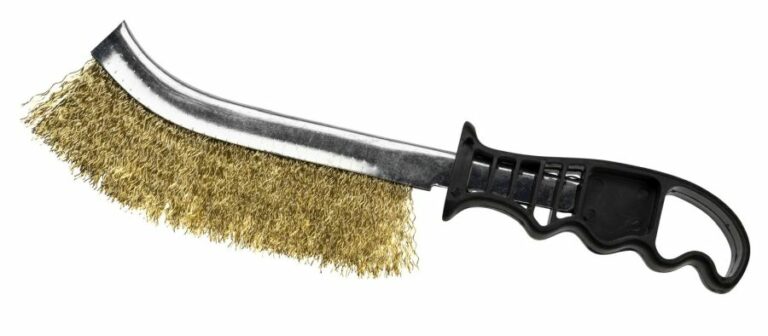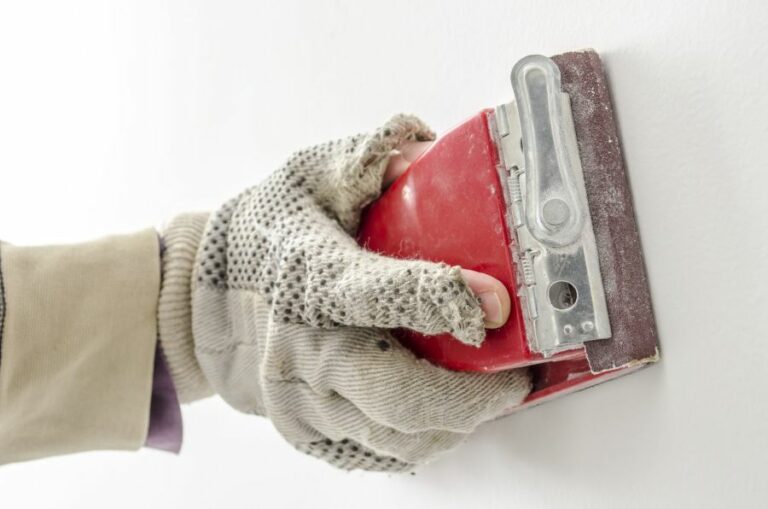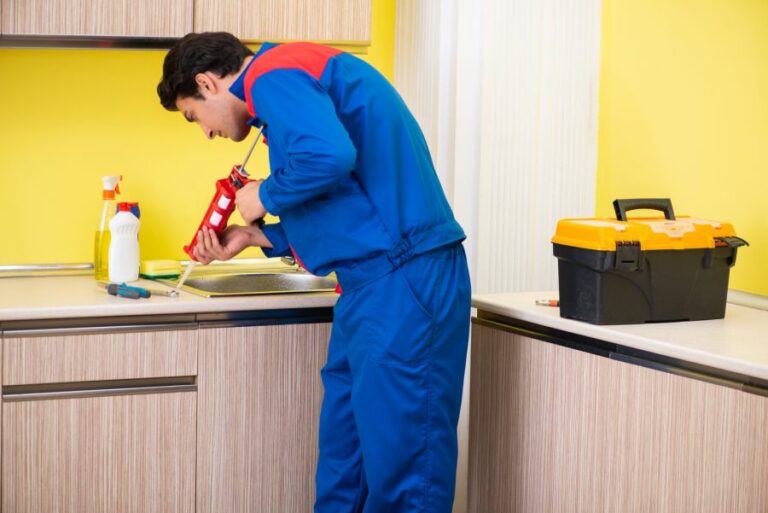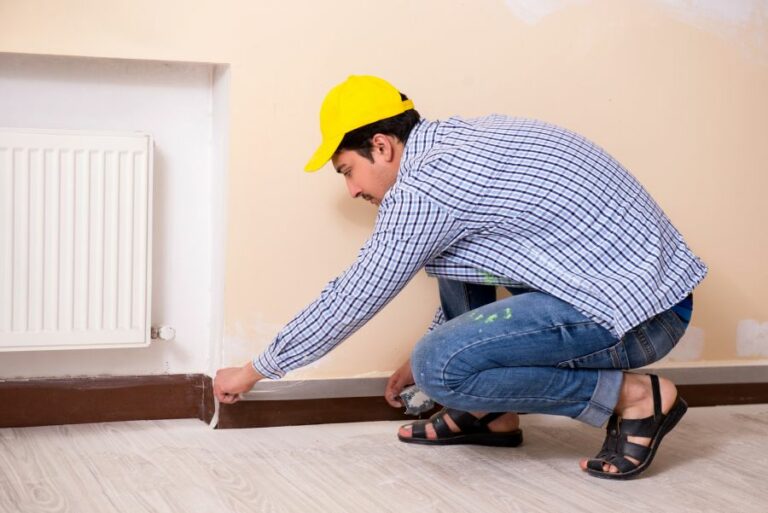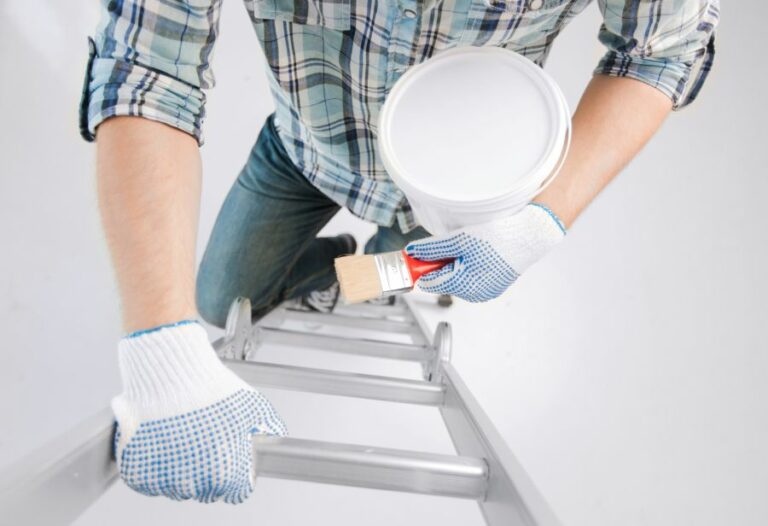Ways To Eliminate Moisture Damage Pre-Prep. What Pros Say
Are you tired of dealing with the aftermath of moisture damage in your home or workplace? Worry no more! Today, we will dive into effective ways to eliminate moisture damage before it begins. Understanding the root causes and implementing preventive measures can stop moisture damage in its tracks and create a healthier, cleaner environment.
Ways to eliminate moisture damage pre-prep:
To eliminate moisture damage before preparations, identify moisture sources such as leaks, condensation, and high humidity levels, and address them promptly. Ensure proper insulation in walls, roof, and floors, and apply waterproofing measures to the building’s exterior, interior, and foundation. Maintain good drainage with functioning gutters, downspouts, and sloping grounds. Perform regular maintenance, inspections, and maintain HVAC systems for optimal humidity control.

Discover our expert tips on eliminating moisture damage before it wreaks havoc on your home. Learn how to identify potential hazards, control humidity levels, and take preventive measures. Read on to protect your home, belongings, and health from moisture damage!
Contents
- 1 Methods for Eliminating Moisture Damage Before Preparations
- 2 Strategies for Avoiding Moisture Damage Risks
- 3 Techniques for Moisture Prevention in Construction Projects
- 4 Key Approach to Regulating Moisture in Above-Grade Walls
- 5 Reducing Moisture Levels in Concrete Slabs: Tips and Techniques
Methods for Eliminating Moisture Damage Before Preparations
Moisture creates an environment conducive to mold growth and can cause extensive damage to a building’s structure and your belongings. The key to preventing these issues is to take steps before the moisture has a chance to wreak havoc.
• Identify Sources of Moisture
Moisture can come from various sources, such as leaks, condensation, or even high humidity levels. Identifying and addressing these sources before they cause damage is crucial. Some common sources of moisture that should be considered are:
- Plumbing leaks: Inspect pipes regularly for leaks, especially in areas such as bathrooms, kitchens, and basements. Promptly fix any leaks that are discovered.
- Roof leaks: Inspect the roof regularly, especially after heavy rainstorms, to ensure that there are no leaks letting moisture into the attic.
- High humidity levels: Maintain indoor relative humidity levels between 30%-50% to reduce condensation and lower the chances of mold growth.
- Poor ventilation: Ensure that there is proper ventilation in areas prone to moisture buildup, such as bathrooms, kitchens, and laundry rooms. Installing exhaust fans can help improve airflow.
• Proper Insulation
Inadequate insulation can lead to condensation issues and higher energy bills. To prevent moisture damage, it’s essential to properly insulate your walls, roof, and floors.
- Wall insulation: Ensure there is proper insulation in your walls to help regulate indoor temperatures, which can minimize the potential for condensation.
- Roof insulation: Insulates your roof to prevent heat loss, reducing the chances of ice dams, icicles, and other winter-related roof issues that can lead to moisture damage.
- Floor insulation: Insulates your floors, especially in rooms prone to moisture, such as basements, to reduce the likelihood of dampness and mold growth.
• Waterproofing Measures
Adding waterproofing measures to your building can significantly reduce the chances of moisture intrusion.
- Exterior waterproofing: Apply waterproof coatings or membranes to the exterior of your building to help keep moisture out. This is especially important for below-grade spaces like basements.
- Interior waterproofing: Apply waterproof paint or sealants on the interior walls and floors of rooms that are prone to moisture buildup.
- Foundation waterproofing: Sealing the foundation with waterproof materials, such as membranes or coatings, can prevent moisture buildup and protect your home from potential damage.
• Proper Drainage
Good drainage is crucial to keeping water away from your building and preventing moisture issues.
- Gutters and downspouts: Ensure that your gutters and downspouts are properly installed, clean, and free of debris. They should be able to effectively collect and direct water away from your building.
- Sloping the ground: The ground around your building’s foundation should slope away from it to help guide water away from the structure.
- French drains: Installing a French drain system around your foundation can be beneficial for reducing water infiltration and avoiding damage.
• Regular Maintenance and Inspection
Routine maintenance and inspection of your property can help identify and address moisture-related problems before they escalate.
- Annual inspections: Conduct regular inspections to check for signs of moisture damage, mold growth, or mechanical issues that could lead to moisture problems.
- React promptly to issues: Address any problems discovered during inspections immediately to prevent further damage.
- Maintain HVAC systems: Ensure your heating, ventilation, and air conditioning (HVAC) systems are working efficiently and are correctly sized for the building. This can help lower humidity levels and create a more comfortable living environment.
• Conclusion
By implementing the strategies outlined above, you can effectively eliminate potential moisture damage in the pre-prep phase.
Identifying sources of moisture, proper insulation, waterproofing measures, maintaining good drainage, and carrying out regular maintenance and inspection can go a long way in protecting your home from the costly and harmful effects of moisture damage.
Strategies for Avoiding Moisture Damage Risks
Moisture damage can lead to a myriad of problems in your home, such as mold growth, wood rot, and compromised structural integrity. To protect your property and your family’s health, it is crucial to take proactive steps to prevent moisture damage.
• Understand the Causes of Moisture Damage
The first step in preventing moisture damage is understanding its common causes. In many cases, it is brought about by high humidity, water leaks, poor ventilation, condensation, or a combination of these factors.
By identifying and addressing these issues, you can significantly reduce the risk of moisture damage.
– High Humidity
Humidity refers to the amount of water vapor in the air, and high humidity can lead to excessive moisture in your home. It is essential to maintain a healthy indoor humidity level, typically between 30% and 50%, to prevent moisture damage.
Recommendation: Invest in a hygrometer to monitor humidity levels and make adjustments as needed.
– Water Leaks
Water leaks can result from damaged pipes, roofing materials, or appliances. If left unrepaired, these leaks can lead to extensive moisture damage within your home.
Recommendation: Regularly inspect your home for signs of leaks and address any issues promptly.
– Poor Ventilation
Lack of proper ventilation creates an environment conducive to moisture buildup. This is especially true in areas of your home where moisture is generated, such as kitchens, bathrooms, and laundry rooms.
Recommendation: Ensure these areas are equipped with proper exhaust fans, and make use of them while cooking, bathing, or doing laundry.
– Condensation
Condensation occurs when warm, moist air comes into contact with cold surfaces, such as windows, walls, or pipes. This can lead to a buildup of water droplets, which may result in moisture damage over time.
Recommendation: Proper insulation and ventilation can significantly reduce the occurrence of condensation.
• Adopt Preventative Measures
Once you have addressed the common causes of moisture damage, there are additional preventative measures to consider for long-term protection.
– Improve Insulation and Air Sealing
Improving your home’s insulation and air sealing can help prevent moisture damage by reducing condensation, improving ventilation, and maintaining consistent indoor humidity levels.
Recommendation: Consult a professional for an energy audit to determine the effectiveness of your home’s insulation and air sealing.
– Install a Vapor Barrier
A vapor barrier is a material that prevents moisture from passing through, and its installation can help reduce the risk of moisture damage in your home. Vapor barriers can be placed on exterior walls, within the insulation, or on the floor of crawl spaces.
Recommendation: Consult with a contractor about the installation and proper placement of vapor barriers in your home.
– Maintain Proper Drainage
Proper drainage systems help to keep water away from your home’s foundation, reducing the chances of moisture damage in basements and crawl spaces.
Recommendation: Ensure your gutter system is functioning effectively and that your property slopes away from your foundation. Consider installing a sump pump in your basement or crawl space if necessary.
– Regularly Inspect and Maintain Your HVAC System
Your heating, ventilation, and air conditioning (HVAC) system plays a crucial role in maintaining healthy indoor humidity levels. Regular maintenance and inspections can help ensure it operates efficiently and effectively.
Recommendation: Schedule routine HVAC inspections and maintenance and change air filters as recommended by the manufacturer.
– Use Moisture-Resistant Building Materials
When undertaking home renovations or repairs, consider using moisture-resistant building materials, such as mold-resistant drywall, paint, and tile. These materials can help prevent future moisture damage.
Recommendation: Consult with a contractor or home improvement professional on the best moisture-resistant materials for your specific project.
• Monitor and Respond to Signs of Moisture Damage
To further protect your home, it is essential to be vigilant and responsive to any signs of moisture damage, such as peeling paint, damp spots, musty odors, or mold growth.
Recommendation: Investigate and address any suspected moisture damage promptly to prevent more severe issues down the line.
By understanding the causes of moisture damage, adopting preventative measures, and responding quickly to any signs of a problem, you can successfully protect your home from the risks associated with excess moisture.
Method | Description |
|---|---|
Proper ventilation | Ensure adequate airflow in your home to prevent the buildup of moisture and condensation. |
Dehumidifiers | Use dehumidifiers in areas prone to high humidity, like basements and bathrooms, to reduce moisture in the air. |
Sealing leaks | Inspect for and repair any leaks in your home’s roof, pipes, and foundation to prevent water intrusion. |
Insulation | Proper insulation can prevent condensation by reducing temperature differences between indoor and outdoor surfaces. |
Water-resistant materials | Using water-resistant building materials and paint can help reduce moisture absorption by your home’s structure. |
Gutters and downspouts | Keep your gutters clean and ensure that downspouts direct water away from your home’s foundation to prevent water damage. |
Techniques for Moisture Prevention in Construction Projects
• Understanding Moisture-Related Problems
Moisture is a common issue in the construction industry and can lead to various problems, such as mold growth, structural damage, and reduced energy efficiency.
In order to effectively prevent moisture in construction, it is essential to understand the sources of moisture and the potential solutions to address these issues.
– Sources of Moisture
Moisture can originate from various sources, such as the following:
- Rainwater and groundwater infiltration
- Condensation due to temperature and humidity differences
- Moisture generated by building occupants and their activities
- Materials containing moisture during construction
• Effective Strategies to Prevent Moisture in Construction
– Design Considerations
Proper design plays a crucial role in preventing moisture-related issues in construction. Here are some design considerations that can help:
1. Proper Site Selection and Preparation
Choose a suitable site that has good drainage and is not prone to flooding. Site preparation should include grading the land to direct water away from the building. Additionally, installing perimeter drains and sump pumps can help in controlling groundwater infiltration.
2. Vapor Barriers and Damp Proofing
Include vapor barriers and damp-proofing materials in the design to reduce the passage of moisture through the building envelope. Vapor barriers should be placed on the warm side of the insulation to prevent condensation.
Damp-proofing materials, such as waterproof coatings, should be applied to foundation walls and floors to minimize groundwater infiltration.
3. Ventilation Systems
Proper ventilation systems are essential to control moisture generated by building occupants and their activities. Installing exhaust fans in high-moisture areas like bathrooms and kitchens can help reduce humidity levels.
Moreover, an energy recovery ventilation (ERV) system is recommended to exchange fresh air with stale air while simultaneously regulating humidity levels.
– Construction Practices
Adopting the best construction practices can significantly help in preventing moisture-related issues. Here are some recommendations:
1. Use Moisture-Resistant Materials
Select materials that are less susceptible to moisture damage, such as metal or plastic materials for framing instead of wood. In addition, choose moisture-resistant wall and ceiling materials like cement boards for wet areas like bathrooms.
2. Proper Installation of Materials
Ensure that materials are installed correctly to minimize the chances of moisture infiltration. This includes properly sealing penetrations, such as plumbing and electrical fixtures, and ensuring that window and door openings are well-flashed and watertight.
3. Storage of Materials
Store construction materials properly to prevent them from getting wet. Cover them with waterproof tarps or store them off the ground in a dry and well-ventilated area.
– Post-Construction Maintenance
Regular maintenance is crucial to ensure the building remains free from moisture-related problems. Here are some key maintenance tasks to consider:
1. Inspect the Building Envelope
Regularly check the building envelope for any signs of leaks, cracks, or other damage that can lead to moisture infiltration. Repair any issues promptly to avoid further deterioration.
2. Maintain Drainage Systems
Ensure that gutters, downspouts, and drains are clear of debris and functioning properly to direct water away from the building. Similarly, maintain any sump pumps and ensure they are working efficiently.
3. Monitor Indoor Humidity Levels
Monitor indoor humidity levels and aim to maintain them between 30%-50%. Use dehumidifiers in high-humidity areas to help control moisture levels.
• Conclusion
Preventing moisture in construction is a vital aspect of ensuring a healthy and durable building. By implementing proper design considerations, adopting best construction practices, and conducting regular maintenance, you can effectively reduce moisture-related issues in your construction projects.
Prevention Method | Description |
|---|---|
Site drainage | Ensure proper grading and drainage around the construction site to prevent water accumulation and facilitate runoff. |
Vapor barriers | Install vapor barriers under the concrete slab or foundations to reduce moisture migration from the ground into the structure. |
Water-resistant materials | Utilize water-resistant construction materials such as treated lumber, water-resistant drywall, and non-absorbent insulation materials. |
Proper venting and sealing | Provide adequate ventilation for areas prone to moisture accumulation, such as crawl spaces and attics, and seal any gaps or openings to prevent moisture infiltration. |
Moisture-control techniques during construction | Protect building materials from moisture during construction and ensure timely installation of roofing and siding materials to reduce exposure to rain or snow. |
Humidity control | Install HVAC systems or dehumidifiers to control indoor humidity levels and reduce moisture-related problems within the structure. |
Key Approach to Regulating Moisture in Above-Grade Walls
Every building strives to maintain a comfortable and dry living environment for occupants. One critical aspect of achieving this is controlling moisture in above-grade walls.
• Understanding the Importance of Moisture Control
Controlling moisture levels in above-grade walls is essential for various reasons, most importantly, to maintain healthy indoor living conditions. Excess moisture can lead to several problems, such as mold and mildew growth, reduced thermal performance, and structural deterioration.
Thus, it is crucial to effectively manage moisture levels in buildings, particularly in regions with high humidity levels or significant precipitation.
• Water-Resistive Barriers: The Primary Defense
One of the best ways to control moisture in above-grade walls is by installing water-resistive barriers (WRBs). These materials serve as a shield against exterior moisture and a primary line of defense. They prevent water from infiltrating the wall system and causing damage, rust, and rot.
I recommend using high-quality WRBs, preferably those that comply with ASTM E2570 standards or equivalent, to ensure effectiveness and durability. Continuous and comprehensive installation is also essential to provide maximum protection from wind-driven rain and other moisture sources.
• Proper Wall Design: Essential for Moisture Management
Another critical aspect of controlling moisture in above-grade walls is an effective wall design. These design strategies provide additional protection against moisture infiltration and assist with proper drainage and drying.
– Cavity Walls and Drainage Spaces
Cavity walls consist of two masonry walls separated by an air space, which can be vented or filled with insulation. They are primarily used in regions with heavy rainfall or high humidity levels to prevent moisture from penetrating the interior spaces while still allowing the walls to dry effectively.
Additionally, a proper drainage space behind the cladding in wall assemblies is crucial. This strategy utilizes building wraps, furring strips, or other materials that create a separation between the cladding and sheathing, allowing for effective drainage of moisture and promotion of drying.
– Ventilation and Air Barriers
Proper ventilation and well-designed air barriers are essential components for controlling moisture in above-grade walls. Air barriers prevent uncontrolled air movement through the wall system, which can carry water vapor and lead to condensation within the wall assembly.
While selecting an air barrier, opt for materials that prevent air infiltration while still allowing water vapor to permeate. As for ventilation, ensure adequate airflow in the wall system to promote moisture removal and drying.
– Use of Vapor Retarders
Vapor retarders can significantly contribute to controlling moisture migration in above-grade walls. These materials slow down the diffusion of water vapor through the wall assembly, thus minimizing the risk of condensation and moisture-related issues.
I recommend using Class II vapor retarders, like Kraft-faced insulation or polyethylene sheeting, in colder climates to prevent condensation within the wall system. In contrast, more vapor-permeable materials should be used in humid and mixed climates to avoid trapping moisture within the wall assembly.
• Selecting the Right Materials for Moisture Control
The choice of materials used in wall assemblies directly impacts moisture control. Here are a few recommendations on materials for effective moisture management:
- Sheathing: Opt for moisture-resistant sheathings, such as fiberglass-faced gypsum boards or rigid foam insulation boards, that can withstand moisture exposure without losing structural integrity.
- Cladding: Permeable cladding materials, such as brick, stone, or fiber-cement siding, can help promote ventilation and drying in wall assemblies.
- Insulation: In humid and mixed climates, opt for vapor-permeable insulation like mineral wool or fiberglass, as they allow moisture migration and drying.
- Sealants and Flashing: Ensure proper sealing of wall penetrations and use high-quality flexible flashing to prevent water infiltration.
• Conclusion
In conclusion, the primary method to control moisture in above-grade walls is a combination of appropriate design strategies, effective material selection, and proper installation techniques.
By implementing these moisture management solutions, such as water-resistive barriers, cavity walls, air barriers, and vapor retarders, you can ensure a comfortable and healthy indoor environment while preventing long-term damage to the building structure.
Reducing Moisture Levels in Concrete Slabs: Tips and Techniques
Moisture is an inescapable factor in most construction projects, especially when dealing with concrete slabs. Excessive moisture can lead to a myriad of problems, including weakened structure, mold growth, and flooring failures.
Experts in the construction industry continuously look for solutions to mitigate moisture levels in concrete slabs.
• Proper Mix of Design and Construction Practices
The first step in reducing moisture in a concrete slab is to use a well-designed concrete mix and follow best construction practices. These factors play a significant role in determining the moisture content of the slab and ensuring that it dries at an appropriate rate.
– Selecting an Appropriate Water-to-Cement Ratio
An essential aspect of mix design is the water-to-cement (w/c) ratio, which has a direct impact on the moisture levels in the concrete. A lower w/c ratio means less water vapor needs to escape during the drying process, resulting in a quicker drying time.
In general, a w/c ratio of 0.45 or lower is recommended to minimize the overall moisture content and decrease the drying time. Additionally, incorporating admixtures like water reducers or superplasticizers will allow for lower w/c ratios while maintaining workability.
– Proper Curing Techniques
Curing is a critical aspect of concrete slab construction and, when done correctly, can ultimately minimize moisture issues. Adequate curing prevents premature drying or surface cracking and allows the concrete to develop its full potential strength.
The American Concrete Institute (ACI) recommends a minimum curing period of seven days for normal slabs. For slabs exposed to aggressive environments or with reduced w/c ratios, the curing period typically must be extended to ensure adequate strength development.
• Adequate Ventilation and Temperature Control
To assist in reducing moisture in a concrete slab, good ventilation and temperature control is essential during the drying process. These methods help to promote air circulation and remove excess moisture from the slab.
– Encourage Air Circulation
Creating proper ventilation by using fans or opening windows and doors can significantly improve the slab’s drying rate. Stagnant air hinders moisture evaporation, leading to lengthy drying times and potential moisture issues down the line.
– Temperature Control
Maintaining consistent and moderate temperatures within the space also promotes a more effective drying process. Extremely high temperatures can lead to rapid surface drying, resulting in concrete shrinkage and possible cracking.
On the other hand, low temperatures slow down both the curing and the drying process. Experts typically recommend maintaining a temperature range between 50 and 85 degrees Fahrenheit for optimal drying conditions.
• Use Moisture-Resistant Materials and Techniques
Utilizing moisture-resistant materials and techniques can further minimize moisture in concrete slabs. Implementing these methods will help protect your slab from long-term moisture issues.
– Vapor Retarders
Incorporating vapor retarders or barriers is an effective method of limiting the moisture migration from the ground into the slab. These barriers should be installed directly beneath the slab to block moisture from entering the concrete, resulting in a drier slab overall.
ACI recommends using a minimum 15-mil-thick vapor retarder for non-residential applications or a minimum of 10-mil-thick vapor retarder for residential applications.
– Moisture-Resistant Flooring Materials
Selecting flooring materials specifically designed to withstand high moisture conditions can be beneficial in the long run. Moisture-resistant materials like epoxy coatings, polished concrete, and rubber flooring provide sufficient protection against potential moisture damage and ensure a longer-lasting surface.
• Proper Testing and Monitoring
Lastly, proper testing and monitoring of the moisture levels in concrete slabs are crucial to ensuring long-term durability and avoiding potential issues down the road. Conducting these tests allows you to monitor the progress of drying and make any necessary adjustments in the process.
– Relative Humidity (RH) Testing
The most accurate and reliable method for assessing the moisture condition of a slab is to use an in-situ relative humidity (RH) test. This testing method measures the moisture ‘inside’ the structure and can accurately determine if the slab is ready for moisture-sensitive finishes.
The ASTM F2170 standard provides guidelines on the proper RH testing procedure and should be followed closely to ensure accurate results are obtained.
– Continuous Monitoring
Continuously monitoring the moisture levels in your slab will ensure that the drying process is on track and prevent potential moisture issues. Proper monitoring is also crucial for assessing the effectiveness of the various moisture reduction techniques used in your project.
In conclusion, reducing moisture in a concrete slab is crucial for ensuring long-term durability and preventing potential issues like mold growth and flooring failures.
Implementing appropriate mix design, construction practices, ventilation, temperature control, and using moisture-resistant materials can effectively reduce moisture in a concrete slab.
Furthermore, proper testing and monitoring will help provide invaluable insight into the progress of your slab’s drying process.
Methods | Description |
|---|---|
Proper curing | Allow the concrete slab to cure properly. This process helps in achieving the desired strength and reducing excess moisture. |
Use of vapor barriers | Install a vapor barrier underneath the concrete slab to prevent moisture from seeping up from the ground. |
Adequate drainage | Ensure proper drainage around and below the concrete slab to prevent accumulation of water and minimize moisture migration. |
Dehumidification | Use dehumidifiers or fans to remove excess moisture from the air above the slab. |
Coatings and sealants | Apply water-resistant coatings or sealants to the surface of the slab to prevent water penetration and reduce moisture absorption. |
Ventilation | Ensure proper ventilation to allow moisture to evaporate and be carried away by air circulation. |
Use of air entrainment admixtures | Add air entrainment admixtures during the mixing of the concrete to help in reducing the amount of water needed and improve the ability to release trapped water vapor. |

